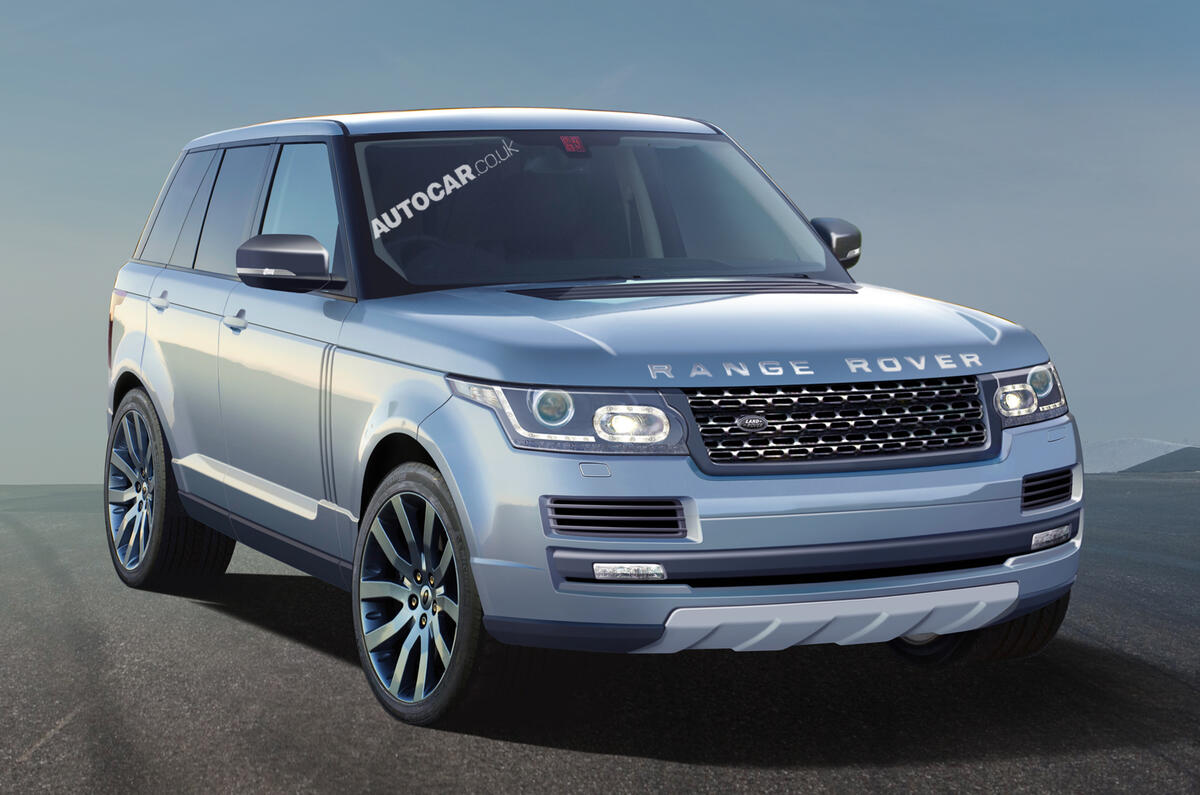This is the final look for the all-new 2013 Range Rover 4, which is undergoing its last few months of testing before an expected showroom debut early next year.
The launch of the fourth-generation model brings with it the biggest technical leap yet in the Range Rover’s 42-year history as it switches to an all-new aluminium monocoque platform.
The new Range Rover will be heading further upmarket, with entry-level prices likely to start at around £65,000 and rising to at least £120,000 for the plushest model, which is expected to use the recent Autobiography Ultimate Edition - with its teak-lined load bay and higher-end leather trim - as inspiration.
Range Rover’s design team hasn’t strayed too far from the look of today’s model, although the upright boxiness of today’s car has been significantly softened. At the front, the nose is now inclined rearwards and the ‘stand-off’ bumpers that marked the current model have been dropped for a more smoothly integrated design. The Mk4 Range Rover has the presence of the old model, but it also looks far more modern.
The distinctive ‘gill’ vents that were seen on the original Mk3 are expected to return, although Autocar has seen a full-size model of the Mk4 wearing a smaller, angled vent on the front wing. Both headlights are also partly wrapped onto the body side in an unusual styling flourish, and the rear light clusters have been slimmed down.
The new, lightweight platform has been developed from the pressed-and-riveted technology used by Jaguar for the XJ saloon, and is expected to shave a massive 400kg from the weight of today’s car. Sources suggest that if the Mk4 is fitted with the new V6 petrol engine being developed by JLR, the lightest version of the new Range Rover could weigh less than two tonnes.
There’s no definitive news yet on a likely engine line-up for the new Range Rover. Indeed, in preparation for the new model, today’s version is now only available with V8 petrol and V8 diesel engines, and in two upmarket trims. However, lucrative overseas markets such as China will certainly get the V6 petrol engine for tax reasons.
Land Rover is also developing a hybrid version of the new model, hooking up an electric motor to the new V6 engine. Set for launch late next year, the hybrid will have a CO2 rating of just 150g/km, sources say.
Insiders have also hinted that the V8 diesel version will be the unexpected performance hero of the Mk4 line-up. The combination of significant weight saving and a massive 516lb ft of torque will result in extraordinary in-gear performance. Engineering sources have even said that the V8 diesel’s torque output has been limited to prevent long-term damage to the transmission system.





Join the debate
Add your comment
Re: New Range Rover pictured
LA, the first para is a quote from The Special One in an earlier post. My point was that they shouldn't mess with a successful formula. If they were going to, the new XJ is a bad example, as it hasn't been a commercial success....
Re: New Range Rover pictured
Re: New Range Rover pictured
It doesn't look new at all. Already looking dated. Should have taken a leaf out of Jaguar's design book for the XJ. They went the Porsche route instead ....zzzzzzzzzzzzzzzzzz........
....Why on earth would you do that? The XJ is a horribly unresolved design that has been a very slow seller. Why would Land Rover want to commit commercial suicide with one of their most profitable models?